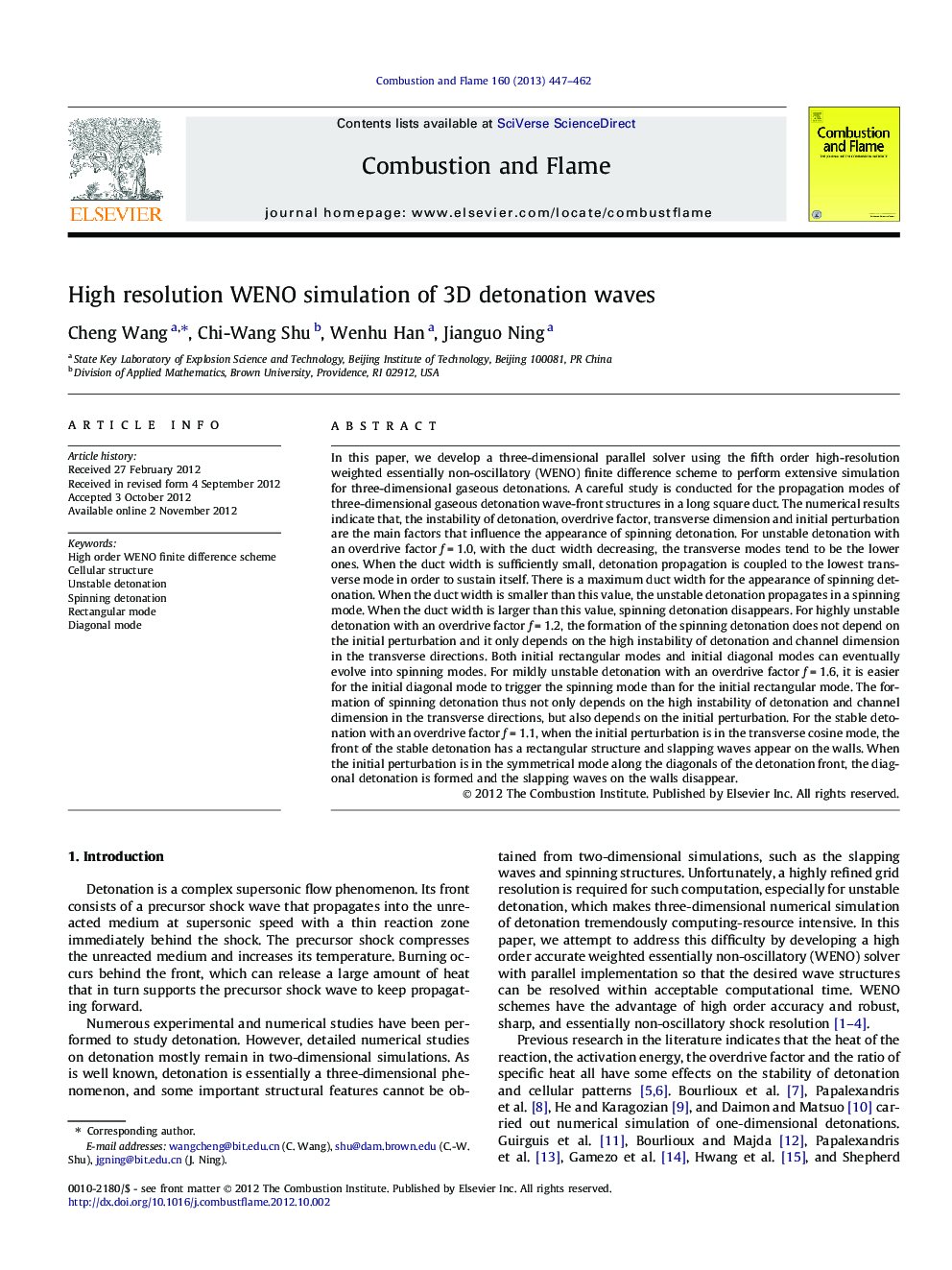| Article ID | Journal | Published Year | Pages | File Type |
|---|---|---|---|---|
| 10264741 | Combustion and Flame | 2013 | 16 Pages |
Abstract
In this paper, we develop a three-dimensional parallel solver using the fifth order high-resolution weighted essentially non-oscillatory (WENO) finite difference scheme to perform extensive simulation for three-dimensional gaseous detonations. A careful study is conducted for the propagation modes of three-dimensional gaseous detonation wave-front structures in a long square duct. The numerical results indicate that, the instability of detonation, overdrive factor, transverse dimension and initial perturbation are the main factors that influence the appearance of spinning detonation. For unstable detonation with an overdrive factor f = 1.0, with the duct width decreasing, the transverse modes tend to be the lower ones. When the duct width is sufficiently small, detonation propagation is coupled to the lowest transverse mode in order to sustain itself. There is a maximum duct width for the appearance of spinning detonation. When the duct width is smaller than this value, the unstable detonation propagates in a spinning mode. When the duct width is larger than this value, spinning detonation disappears. For highly unstable detonation with an overdrive factor f = 1.2, the formation of the spinning detonation does not depend on the initial perturbation and it only depends on the high instability of detonation and channel dimension in the transverse directions. Both initial rectangular modes and initial diagonal modes can eventually evolve into spinning modes. For mildly unstable detonation with an overdrive factor f = 1.6, it is easier for the initial diagonal mode to trigger the spinning mode than for the initial rectangular mode. The formation of spinning detonation thus not only depends on the high instability of detonation and channel dimension in the transverse directions, but also depends on the initial perturbation. For the stable detonation with an overdrive factor f = 1.1, when the initial perturbation is in the transverse cosine mode, the front of the stable detonation has a rectangular structure and slapping waves appear on the walls. When the initial perturbation is in the symmetrical mode along the diagonals of the detonation front, the diagonal detonation is formed and the slapping waves on the walls disappear.
Related Topics
Physical Sciences and Engineering
Chemical Engineering
Chemical Engineering (General)
Authors
Cheng Wang, Chi-Wang Shu, Wenhu Han, Jianguo Ning,
